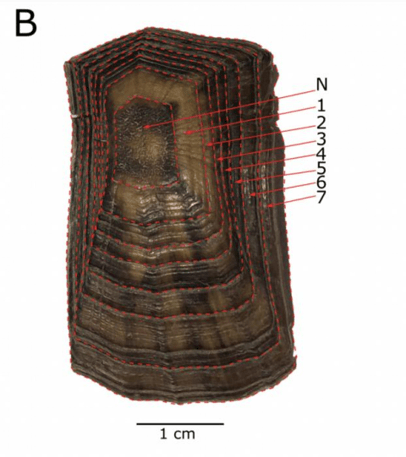The advent of the atomic bomb has shaped history and reverberated through ecosystems worldwide. Its profound consequences have now spurred scientists to consider the possibility of designating a new geological epoch—the Anthropocene—marked by the imprint of nuclear weaponry.
In a striking revelation, a recent study unveils that turtles near nuclear production and detonation sites have unwittingly inscribed the narrative of these weapons within their very shells.
Using a specialized mass spectrometer, a tool capable of discerning the chemical composition of materials, researchers have unveiled minute traces of uranium within the shells of four turtles. Among these specimens are a sea turtle and a tortoise, collected between the 1950s and 1980s as natural history artifacts from locales near nuclear sites. The analysis of these samples—two from production facilities and two from detonation sites—uncovered the distinct isotopic imprints of uranium in the shells, corresponding to the specific signatures of these two types of nuclear activities. (Isotopes denote variations of an element characterized by differing numbers of neutrons in their nuclei.)

Intriguingly, researchers detected varying levels of uranium across concentric layers akin to tree rings within one turtle shell, providing a temporal record of the creature’s uranium absorption. The findings were disclosed on August 22 in PNAS Nexus.
The formidable potency of nuclear weapons arises from the fission, or splitting, of radioactive elements like uranium and plutonium. Yet, the birth and detonation of such weaponry disseminate these elements into the surroundings. Once introduced into the environment, these constituents integrate into local ecosystems, primarily through soil and water, and subsequently find their way into plants and animals.
The analyzed turtle shells did not exhibit radioactivity, given the minuscule quantities of uranium—around one part per billion. According to Cyler Conrad, co-author and earth scientist at the Pacific Northwest National Laboratory, the health of these surviving animals was unlikely to be impacted by such a modest uranium presence.

While the discovery of uranium in turtle shells isn’t inherently surprising due to its natural occurrence, the revelation that exceedingly small amounts could be detected and linked to specific nuclear histories astounded Conrad and his team. This breakthrough technique, currently being adapted for plutonium analysis, can elucidate the timeline and locations of nuclear activity and the trajectory of radioactive substances from soil and water into the realms of flora and fauna. Moreover, its application could extend to tracing exposure to nuclear fuel and weaponry alike.
For Laura Martin, an environmental historian at Williams College, who was not involved in the study, this research serves as a poignant reminder of the scars borne not only by Japan—where nuclear bombs were deployed—but also by the United States. Beyond weapon deployment, production and experimental detonations have dispelled radiation and pollutants into American landscapes and ecosystems, particularly in the Western regions and often on or near Indigenous territories and the Marshall Islands.
Martin emphasizes that this study underscores the far-reaching impacts of nuclear colonialism, encompassing human history and leaving an enduring imprint on the broader biosphere.


